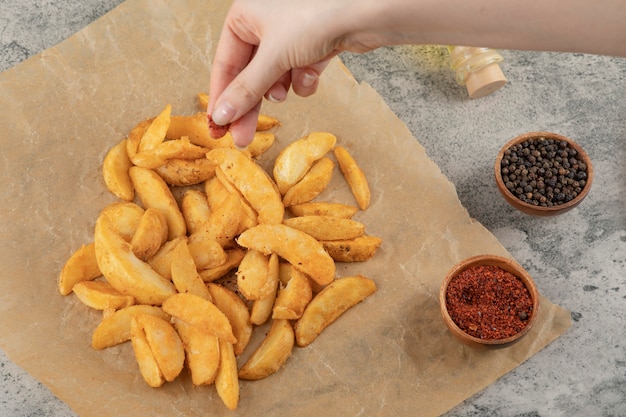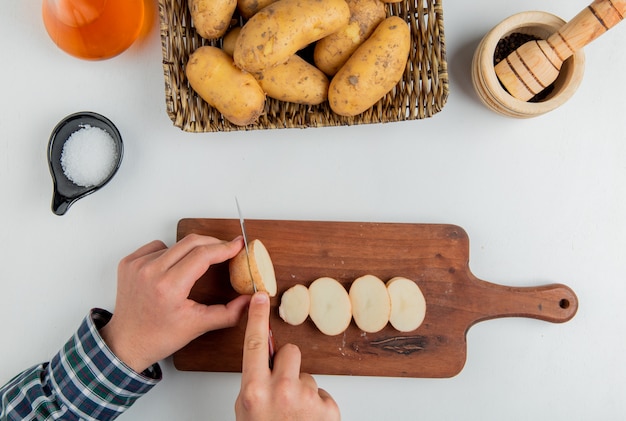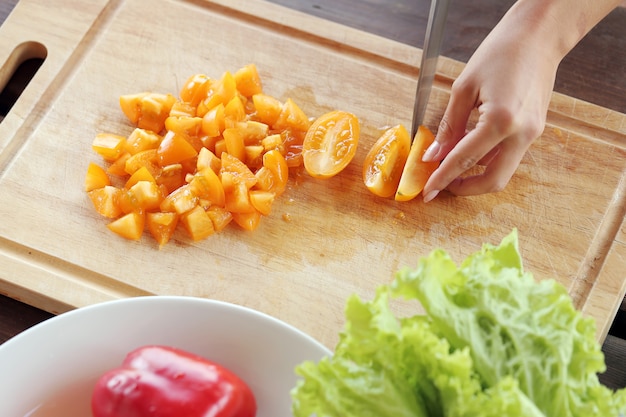Alright, fellow foodies, gather 'round! I'm talking about a snack that's been a staple in my family for generations – crispy pork rinds. Remember those days when you were a kid, and the smell of sizzling fat and crackling pork filled the air? It was pure magic! Now, I'm here to share all my secrets and tips for achieving that perfect, satisfying crunch, because let's be honest, a limp, soggy pork rind is a crime against snacking.
From choosing the right cut of meat to mastering the frying technique, I've got you covered. We'll explore the history of this delicious treat, delve into the science behind the crunch, and even discuss how to incorporate pork rinds into your favorite dishes. So grab a cuppa, get comfy, and let's dive into the world of crispy pork rinds together.
(Part 1) The History of Pork Rinds: A culinary journey Through Time

Now, I know what you're thinking: "Pork rinds? They're just leftover bits of pig, right?" Well, that couldn't be further from the truth! The humble pork rind has a history that stretches back centuries, and it's a testament to human ingenuity and our love for good eats.
Ancient Origins: From Scraps to Delicacy
Believe it or not, pork rinds have been around for ages. In ancient Rome, they were a common food for the working class, made by simply frying up scraps of pig skin. It was a cheap and hearty way to use every bit of the animal. Think of it like the original "waste not, want not" philosophy. Imagine a bustling Roman market, filled with the aroma of sizzling pork skin. It wasn't just a snack – it was a symbol of resourceful living.
A Taste of the South: From Southern Kitchens to the Mainstream
In the American South, pork rinds took on a new life. They became a beloved snack, especially in the rural areas, where they were often made at home. It was a way to use the leftovers from the pig, and it was a delicious way to add some crunch to a meal. Picture a family gathering, with a big pot of crackling pork rinds on the table, shared with laughter and stories. It wasn't just about the taste, it was about tradition, community, and enjoying simple pleasures.
Modern Day Pork Rinds: A Snacking Sensation
Today, pork rinds are enjoying a resurgence in popularity, thanks to the rise of the low-carb diet movement. They're a great source of protein and a satisfying snack that won't break the bank. But let's be honest, they're just darn tasty, and that's what really matters, right? From being a humble kitchen staple to a trendy snack, the journey of pork rinds reflects our evolving culinary landscape and our constant pursuit of deliciousness.
(Part 2) The Science of the Crunch: Why Do They Crackle?

Okay, let's get a bit nerdy here for a moment. The crunch of a perfect pork rind is a symphony of textures, and it all boils down to science. It's not just about the frying process; it's about the structure of the pork skin itself.
Collagen: The Key to Crunch
Pork skin is primarily made up of collagen, a protein that forms long, tightly packed fibers. When you fry the skin, the collagen fibers shrink and contract, creating air pockets within the structure. Those air pockets are what give the pork rinds their signature crunch. The more air pockets, the crispier the rind! It's a bit like a miniature version of a soufflé, with the collagen fibers acting as the framework for those satisfying, air-filled pockets.
Moisture is the Enemy: Maintaining the Crackle
The key to achieving that perfect crunch is to ensure the skin is completely dry before frying. Even a tiny bit of moisture can trap steam inside the rind, making it soggy and chewy. That's why it's crucial to properly dry the skin after cleaning and scoring it. Imagine trying to cook a perfectly crisp potato chip with a bit of water clinging to it. The result wouldn't be pretty, and the same applies to our pork rind quest for crunch.
The Science of Sound: The Physics of Crunch
The satisfying "crackle" you hear when you bite into a pork rind is the result of the air pockets collapsing under pressure. As the air escapes, the sound waves travel through the air and reach our ears, creating that delightful auditory experience. It's a mini orchestra of sound, with each tiny air pocket playing its part to create that satisfying crunch.
(Part 3) Selecting the Right Pork Skin: Choosing Your Crunchy Canvas

Let me tell you, not all pork skin is created equal! Just like choosing the right cut of meat for a roast, selecting the right skin is crucial for achieving that perfect crunch. It's like choosing the perfect canvas for your masterpiece – the right pork skin will set the stage for a truly satisfying snack.
The Thicker the Better: Finding the Perfect Skin
First and foremost, you want to look for skin that's thick and robust. Thin skin will tend to shrink excessively during frying, resulting in rinds that are too brittle and fragile. You want skin that has a nice, even thickness, so it cooks evenly and develops that satisfying crunch. Think of it like a sturdy foundation – a thick skin will hold its shape during frying, creating a satisfyingly crisp bite.
Fresh is Best: Quality Matters
When it comes to pork skin, freshness is key. The fresher the skin, the better it will cook and the more flavorful it will be. Look for skin that's bright and shiny, with no discoloration or signs of spoilage. Just like any fresh ingredient, the quality of your pork skin will directly impact the final result. It's worth the extra effort to find the freshest skin possible for the best flavor and texture.
Avoid the "Hairy" Bits: Removing the Hair
Most pork skin comes with a layer of hair. Don't worry, it's easily removed. I prefer to use a good quality depilatory cream or a flame torch to get rid of the hair. If you're going with the depilatory cream, be sure to follow the instructions carefully and wear gloves for protection. While the hair itself doesn't affect the taste, it's definitely not a desirable addition to your snack. So, take the time to remove it properly for a smoother, more appealing result.
(Part 4) Preparing the Pork Skin for Frying: Laying the Foundation for Crunch
Now that you've got your hands on some beautiful pork skin, it's time to prep it for frying. This step is all about getting the skin ready for the heat and ensuring that it cooks evenly and achieves that ultimate crunch. It's like prepping a canvas before painting – every step taken here will contribute to the final masterpiece.
Clean and Rinse: A Good Start
Start by thoroughly cleaning the pork skin under cold running water. Rinse it well to remove any dirt, debris, or leftover hair. It's important to get rid of any impurities to ensure a clean, crisp result. This step ensures a hygienic and flavorful result, setting the stage for a delicious crunch.
Scoring the Skin: Creating Surface Area
Scoring the pork skin is an essential step for achieving even cooking and creating those coveted air pockets. This involves cutting through the fat layer and creating a series of small lines across the skin. You can do this with a sharp knife or a scoring tool. The more surface area you create, the better the skin will cook and the crispier it will become. Think of scoring like adding tiny windows to your canvas, allowing heat and air to penetrate the skin more effectively.
Salt and Dry: Bringing Out the Flavor
Once the skin is scored, it's time to season it. Salt is your best friend here. It not only adds flavor but also helps to draw out moisture from the skin, which is crucial for achieving that perfect crunch. I often use a generous sprinkle of coarse salt and sometimes add a touch of black pepper, paprika, or garlic powder for an extra kick. It's like using a primer on your canvas, preparing the surface for the final touches of flavor and texture.
Drying the Skin: Ensuring Crispness
Now comes the crucial drying stage. It's essential to thoroughly dry the skin to avoid moisture that can lead to soggy, chewy rinds. Pat the skin dry with paper towels, then allow it to air dry for a few hours, or even overnight, depending on the humidity. You can also use a fan or a dehydrator to speed up the drying process. This is a crucial step in achieving that perfect crunch – think of it like letting the paint dry completely before adding the final touches to your masterpiece.
(Part 5) Mastering the Frying Technique: The Crunch Factor
Alright, we're finally ready for the big moment: frying the pork skin! This is where all your hard work comes together, and the magic of the crunch really happens. It's like the final stage of your artistic creation – you're about to transform your prepared canvas into a masterpiece of flavor and texture.
The Right Oil: Choosing Your Fat
The oil you choose for frying is just as important as the skin itself. I always recommend using a high-heat oil with a high smoke point, such as lard, vegetable oil, or peanut oil. Lard, especially, imparts a unique richness and flavor to the pork rinds. These oils can withstand high temperatures without breaking down or producing unwanted flavors. It's like choosing the right medium for your painting – a high-heat oil will ensure even cooking and a crisp result.
The Deep Fry Method: Achieving Perfect Crunch
For the best results, I always deep-fry my pork rinds. This method allows the skin to cook evenly and develop that signature crunch. Heat the oil to around 375°F (190°C). Carefully lower the skin into the hot oil, making sure not to overcrowd the pan. The skin will begin to bubble and sizzle as the fat renders out. Think of it like immersing your canvas in a bath of heat, allowing the oil to work its magic.
Timing is Key: Don't Overcook!
Frying time will vary depending on the thickness of the skin, but it typically takes around 5-8 minutes. Keep a close eye on the skin. Once it's golden brown and crispy, remove it from the oil and drain it on paper towels. Don't overcook the skin, as this can make it dry and brittle. Just like any work of art, timing is crucial – too much heat and your creation will be ruined.
(Part 6) Variations and Flavors: Beyond the Basic Crunch
Okay, let's talk about the fun stuff! While plain, crispy pork rinds are undeniably delicious, there's a whole world of flavor possibilities waiting to be explored. It's like adding the finishing touches to your masterpiece – you can explore different colors, textures, and flavors to create something truly unique.
Spice It Up: Adding flavor profiles
Experiment with different spices and seasonings to take your pork rinds to the next level. You can go for classic flavors like Cajun seasoning, chili powder, or garlic powder. Or, get creative with more exotic blends, like curry powder, smoked paprika, or cumin. Imagine a palate of colors – each spice adds its own unique hue to your crunchy creation.
Get Saucy: Drizzling Delight
Who doesn't love a good dip or drizzle? Get saucy with your pork rinds by experimenting with different sauces and toppings. A simple drizzle of hot sauce, bbq sauce, or even a dollop of guacamole can elevate your snack to new heights. Think of sauces as the brushstrokes that add depth and dimension to your edible art.
Sweet and Savory: Exploring New Horizons
Don't be afraid to think outside the box. I've been known to enjoy pork rinds with a sprinkle of powdered sugar, a touch of cinnamon, or even a dollop of whipped cream for a sweet and savory combination. It might sound strange, but it's surprisingly delicious! Why stick to traditional flavors when you can create something truly unique and unexpected?
(Part 7) Serving and Storing: Keeping Your Pork Rinds Crisp
You've worked hard to achieve that perfect crunch, so let's make sure your pork rinds stay crisp and delicious for as long as possible. It's like preserving your art – you want to ensure that your creation stays vibrant and fresh for as long as possible.
Serve 'Em Hot: The Best Way to Enjoy
I prefer to serve my pork rinds hot and fresh out of the fryer, but they are still enjoyable at room temperature. For the ultimate experience, I often pair them with a cold beverage, like a beer or a glass of iced tea. Think of serving your creation in a gallery setting – let the crunch be the star of the show.
Storing for Later: Maintaining Crunch
If you're not serving them right away, store your pork rinds in an airtight container at room temperature. You can also keep them in the freezer for a longer shelf life. Just make sure to defrost them before serving, or pop them back in the oven or air fryer for a quick refresh. It's like protecting your artwork – store it properly to preserve its beauty and freshness.
(Part 8) Pork Rinds in Dishes: Expanding Beyond Snacks
Okay, let's talk about the versatility of this little snack. You're not limited to just munching on them straight out of the bag. They can be incorporated into all sorts of dishes, adding a satisfying crunch and a unique flavor profile. Think of it as exploring the different ways to use your artistic skills – you can use your creation as a building block for other delicious masterpieces.
Crumbled Delight: Adding Texture to Salads
Crumble some pork rinds into your favorite salads for a satisfying crunch and a boost of protein. They pair well with greens, grilled chicken, and a tangy dressing. It's like adding a layer of texture and flavor to your canvas, creating a more complex and interesting composition.
Fried Goodness: Enhancing Soups and Stews
Add a handful of crispy pork rinds to your favorite soups and stews for a unique textural contrast. They'll absorb the broth and create a flavorful, satisfying mouthful. Think of it like adding a bold splash of color to your soup, creating a vibrant and unexpected experience.
Crunchy Topping: Elevating Your Dishes
Use pork rinds as a topping for your favorite dishes. They're great on tacos, burritos, and even baked potatoes. Their crunchy texture and savory flavor add a new dimension to any dish. Think of your pork rind creation as a finishing touch – it adds the perfect touch of crunch and flavor to any dish.
FAQs
So, you're ready to embark on your crispy pork rind journey, but you have a few burning questions? Don't worry, I've got you covered! Think of these FAQs as your guide to navigating the world of pork rind perfection.
1. Are Pork Rinds Healthy?
Pork rinds are a good source of protein and contain minimal carbohydrates, making them a popular choice for low-carb diets. However, they are high in fat, so it's important to consume them in moderation. It's like a balanced art piece – enjoy the goodness of pork rinds in moderation to ensure a healthy and delicious experience.
2. Can I Fry Pork Rinds in My Oven?
Yes, you can bake pork rinds in the oven for a less messy alternative to deep frying. Spread the skin on a baking sheet and bake in a preheated oven at 350°F (175°C) for 15-20 minutes. Just be sure to flip them halfway through to ensure even cooking. Think of it as using a different medium for your creation – you can achieve a similar result with a bit of patience and creativity.
3. Can I Use Pork Rind Flour for Baking?
Absolutely! Pork rind flour, also known as "crackling flour," is a versatile ingredient that can be used in baking to add a unique texture and flavor. It's a great alternative to traditional wheat flour for low-carb baking. It's like exploring a new artistic medium – pork rind flour adds a unique dimension to your baking creations.
4. Where Can I Buy Pork Rinds?
Pork rinds are widely available in grocery stores, especially in the snack aisle. You can also find them in specialty stores that cater to low-carb or keto diets. Think of it as finding the perfect art supplies – you can easily find pork rinds in most grocery stores.
5. Can I Make Pork Rinds at Home?
Definitely! While it may seem intimidating, making your own pork rinds at home is actually quite simple. You just need some basic ingredients and the right equipment. There are many great recipes available online, so don't be afraid to try it out! Think of it as a DIY art project – you can create your own masterpiece of pork rind perfection from the comfort of your own kitchen.
Everyone is watching

How to Cook Frozen Lobster Tails Perfectly: A Step-by-Step Guide
RecipesLobster. Just the word conjures up images of lavish meals, special occasions, and a taste of luxury. But let's...

Pigs in a Blanket Cooking Time: How Long to Bake for Perfect Results
RecipesAh, pigs in a blanket. Just the name conjures up images of those delightful little parcels of crispy pastry en...

Pork Fillet Cooking Time: How Long to Cook It Perfectly
RecipesPork fillet, or tenderloin as it's sometimes called, is a real favourite in our house. It's so versatile, and...

The Ultimate Guide to Cooking Delicious Frankfurters
RecipesLet's face it, we all love a good frankfurter. It's a classic, simple, and always satisfying. But let's be rea...

Wolf Meat Recipes: A Guide to Cooking Wild Game
RecipesLet's be honest, you don't see wolf meat at your local butcher shop every day. It's a bit of a wild card, but ...
